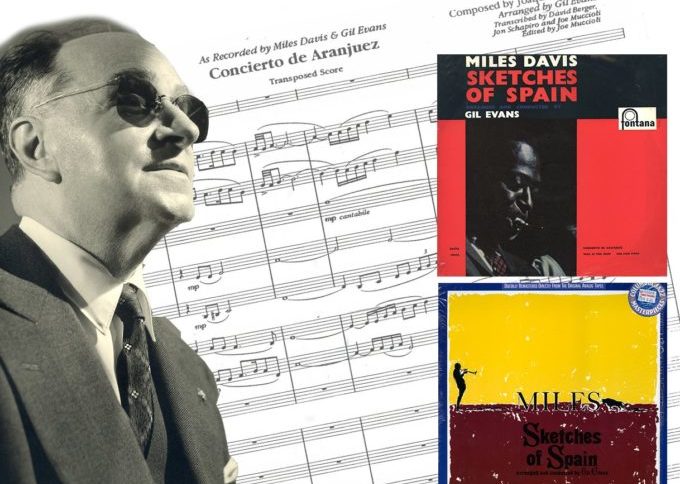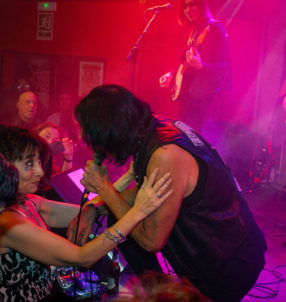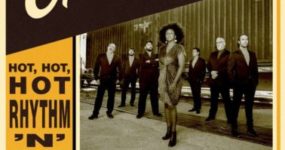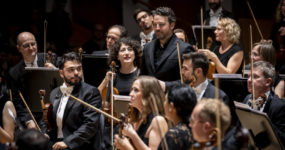24/7 Valencia: Could you tell us more about the legendary composer?
Fundación Victoria y Joaquín Rodrigo: “Joaquín Rodrigo was born in Sagunto (Valencia) on 22 November 1901, the day of Santa Cecilia, the patron saint of music. At the age of three, he lost his sight as a result of a diphtheria epidemic. This circumstance, as he would later state, undoubtedly led him to his vocation for music. At the age of eight he began his musical studies of sol-fa, violin and piano, and from the age of 16, harmony and composition with the masters of the Valencia Conservatory, Francisco Antich, Enrique Gomá and Eduardo Chavarri.
His first compositions date from 1923: Suite for Piano, Two Sketches, for Violin and Piano, and Siciliana, for Cello. In 1924 his first work for orchestra, Juglares, was premiered in Valencia and Madrid, and he obtained the diploma of honour in a national competition with his work for orchestra, five pieces for children, which was later premiered in Paris by the Straram Orchestra. From the beginning, Rodrigo writes all his works in the Braille system, and then dictates them to a copyist.
In 1927, following the example of his predecessors Albeniz, Falla, Granados and Turina, Rodrigo moved to Paris and entered the Ecole Normale de Musique to study for five years with Paul Dukas, who showed a special predilection for his disciple. When his teacher died in 1935, Rodrigo wrote in his memory the ‘Sonada de adiós’ for piano.
He soon became known as a pianist and composer in the Parisian musical circles and made friends with Ravel, Milhaud, and Honegger, and many other great figures of that time, among them Manuel de Falla, whose advice and support would be decisive in his career.
In Valencia in 1933, Joaquín Rodrigo married the Turkish pianist Victoria Kamhi, who he remained with until her death in July 1997, an inseparable companion and his most assiduous collaborator. He continued his studies of musicology in France at the Paris Conservatory and the Sorbonne, and also worked in Germany, Austria and Switzerland before returning to Spain in 1939 to settle permanently in Madrid.
In 1940 the world premiere of the Concierto de Aranjuez for guitar and orchestra took place in Barcelona, a work that would give him universal fame and a clear example of his personal style.
Joaquín Rodrigo’s music represents a tribute to the different cultures of Spain. No other Spanish composer has used, as a source of inspiration, such varied manifestations of the soul of his country, from the history of Roman Spain to the texts of contemporary poets. His music is refined, luminous, and fundamentally optimistic, with a clear melodic predominance and original harmony. His early works are influenced by the composers of his time, such as Ravel and Stravinsky, but very soon a personal voice emerges that will come to create a unique chapter in Spanish culture in the 20th century, where the originality of his musical inspiration is always linked to a devotion to the fundamental values of his tradition.”
MILES DAVIS ‘SKETCHES OF SPAIN’
Miles Davis: “How this all came about was that in 1959 I was in Los Angeles… and went to see a friend of mine named Joe Mondragon (of Apache and Hispanic descent). He was a great studio bass player, playing on recording sessions with Ella Fitzgerald, Chet Baker, Art Pepper and many more. Anyway, when I got to his house, he played the recording of ‘Concierto de Aranjuez’ by this Spanish composer, Joaquin Rodrigo, and said, “Miles, listen to this; you can do this!”
“So I’m sitting there listening and looking at Joe and I’m saying to myself, Goddamn, these melody lines are strong. I knew right there that I had to record it, because they just stayed in my head.”
“When I got back to New York, I called up Gil Evans (my arranger) and discussed it with him and gave him a copy of the record (by Joaquin Rodrigo) to see what he thought could be done with it. He liked it too…”
“After we finished working on ‘Sketches of Spain’, I didn’t have nothing inside me. I was drained of all emotion.”
“Joaquin Rodrigo, the composer of Concierto de Aranjuez, said he didn’t like the record, and he –his composition- was the reason I did Sketches of Spain in the first place. Since he was getting a royalty for the use of the song on record, I told his person who had played it for him, “Let’s see if he likes it after he starts getting those big royalty cheques.” I never heard anything about or from him after that.”
Music critic: “A brooding, dramatic Spanish sound and feeling pervade all the works on this record. Davis, I believe, has rarely if ever soloed with such concentration of emotion, as in several sections of this album particularly in ‘Concierto de Aranjuez’. The characteristic, fiercely mournful Spanish melody was a strong one. Evans’ sketch for Miles looked complex, but Miles seemed to have no difficulty improvising around it.”
Mark Richardson of ‘Pitchfork’ reviewing ‘Sketches of Spain’: “There’s a real charge that comes from the distant, clattering percussion that begins “Concierto de Aranjuez (Adagio)”, the opening track and centerpiece. It’s a piece by Spanish composer Joaquín Rodrigo, and if you hear it played with a classical guitar and full orchestra, you realize both how faithful the arranger Gil Evans was to it in terms of structure and what he accomplished as far as texture. Using French horn, harp, oboe, and bassoon, as well as more typically jazz brass instruments like trumpet and trombone. Evans creates a shifting tapestry of luscious sound. Sometimes the music just seems to hang in the air, and sometimes it lurches toward an unexpected climax. Miles Davis is the only soloist on the record, and he burrows deeply into the melodies, turning them over with a huge, bulbous tone that’s both strong and vulnerable.”
Discogs: “Sketches of Spain has been hailed by music critics as one of the best recordings of the Third Stream genre, which is described as a fusion of jazz, European classical, and world music styles. After Miles Davis and his wife Frances Davis attended a flamenco performance by dancer Roberto Iglesias, Davis was so inspired that he purchased every flamenco album he could find at a New York record shop. The album is a pairing between Davis and arranger and composer Gil Evans, with whom he had collaborated before, for a set of compositions in the Spanish folk tradition. The first piece, taking up the majority of the first side, is the adagio movement from Concierto de Aranjuez. Both Evans and Davis agreed that the song had a “strong” melody. .. In response to comments that the album is something other than jazz, Miles Davis replied, “It’s music, and I like it.”
Allmusic: “Sketches of Spain is one of Miles Davis’ most enduring and innovative achievements. The result is a masterpiece of modern art. The piece, with its stunning colours and intricate yet transcendent adagio, played by Davis on a flügelhorn with a Harmon mute, is one of the most memorable works to come from popular culture in the 20th century. Davis’ control over his instrument is singular, and Gil Evans’ conducting is flawless.”
Report by ‘24/7 Valencia’ team
Article copyright ’24/7 Valencia’
Related Post
This site uses Akismet to reduce spam. Learn how your comment data is processed.

























Leave a comment